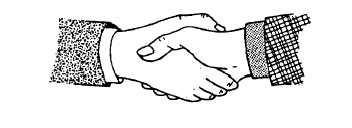QUALITY ASSURANCE
Basically, 2M QA is preventing the occurrence of
defects. QA covers all events from the start of a
maintenance action to its completion and is the
responsibility of all maintenance personnel. For
additional discussion on this topic, refer to the chapter
on quality assurance in this manual.
To this point we have discussed the areas of
maintenance with which you will be especially
concerned as an ETl or ETC. Keep in mind that as your
career progresses, you will be more and more involved
with the “big picture.”
Now let’s discuss another area of concern to you as
you move up into areas of more responsibilities:
supply.
SUPPLY PROCEDURES
You have probably already had many dealings
with supply matters; but as you advance to ET1 and
ETC, your dealings with supply will become more
frequent. Your careful concern will be required.
You will become more involved with supply
support problems, such as–Why is the part
requisitioned not onboard?–Is the equipment
supported by COSAL?–and so on. As a senior
technician, your understanding of supply
procedures and the system will benefit you and,
ultimately, will be an asset to your division’s
maintenance accomplishments.
If your ship’s COSAL is not up-to-date, your
ship’s supply support will be inadequate; and when
you requisition repair parts, you will often encounter
NIS (not in stock) or NC (not carried) items.
Therefore, you must understand how the COSAL
“system” operates, so you can have repair parts on
board that are justifiable and allowable for actual
equipments on board. Your knowledge of the COSAL
and your careful coordination with supply will help
the supply department maintain an up-to-date
COSAL, which in turn will allow your shop to
accomplish efficient equipment repairs.
At this point go to supply and ask to use the COSAL
Use and Maintenance Manual, SPCCINST 4441.170,
Read chapters 1 through 4; chapter 5, through section
C; and chapter 7, sections B, D, and E. Then return to
this manual.
Now that you have completed reading the COSAL
Use and Maintenance Manual, you should have a
basic understanding of how the COSAL is organized
and maintained, and how it can help you in your role
as a supervisor. Remember to refer to this manual
whenever you train your technicians in supply
procedures.
SUPPLY AND YOUR MAINTENANCE
DIVISION
The following paragraphs are based on a senior
technician’s thoughts toward supply. To best use your
supply system, keep these thoughts in mind:
Take great care in selecting your supply petty
officer. Choose someone whom you believe
will be accountable and will keep good
records; someone who will ask for guidance
from you or your supply department should
he or she run into any supply-related
troubles. This individual should not be
someone who has just checked on board from
A school, but someone who has some
experience in the rating.
Know how the supply system operates and
understand the COSAL, at least as it applies to
your electronics maintenance actions.
Use the supply system as it is set up and designed
to function.
Stay away from bulk ordering of parts, because
one order of 20 of an item has the same supply
“hit rate” as one order of 1 of that same item.
One of supply’s bases for stocking an item is
the number of “hits” (orders) within a certain
time frame. To ensure that supply maintains a
sufficient stock of the parts you need, order a
few parts several times rather than many parts
a few times.
At least three months before deployment, assist
the EMO with a listing of parts (with stock
numbers) that you know or feel will be used or
needed to support your systems and equipments.
This list of parts will be checked with supply to
8-7

